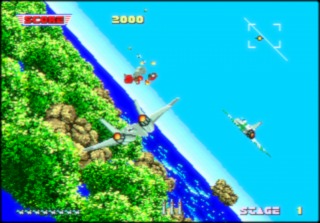History
1985-1986
The Super Scaler engine was designed by Sega's Yu Suzuki and his AM2 arcade division. They introduced the Super Scaler arcade graphics technology with the groundbreaking Hang-On in 1985, running on the Sega Hang-On arcade system board. It was a successor to the Sega VCO Object arcade system board.
In a later interview, Suzuki said that the Super Scaler games were all initially designed as 3D games, and then simulated using three-dimensional sprite-scaling (which simulated the look of texture-mapped 3D polygons and looked significantly more impressive than early, flat-shaded, 3D polygon graphics), even as early as Hang-On in 1985. He stated that his "designs were always 3D from the beginning. All the calculations in the system were 3D, even from Hang-On. I calculated the position, scale, and zoom rate in 3D and converted it backwards to 2D. So I was always thinking in 3D." This was also true for games such as Space Harrier and OutRun. This was an early form of 3D texture-mapping.
1987-1995
 After Burner, released for the Sega X Board arcade system in 1987. Its Super Scaler technology featured advanced sprite scaling and rotation capabilities.
After Burner, released for the Sega X Board arcade system in 1987. Its Super Scaler technology featured advanced sprite scaling and rotation capabilities. With After Burner, running on the Sega X Board arcade system. sprite rotation was introduced. It was followed by more hits such as Galaxy Force, Last Survivor and Power Drift. Sega AM2 eventually made the move to true 3D polygons in 1990, when they began development on the Sega Model 1 arcade system and Virtua Racing.
The Super Scaler engine was the basis for the various pseudo-3D sprite-scaling methods later developed for home systems, including the Neo Geo's sprite-scaling techniques, the SNES console's Mode 7, and the ray casting method used by various computer FPS games like Wolfenstein 3D and Doom. The sprite-scaling capabilities of Super Scaler arcade technology was unsurpassed by any home system up until the release of the Sega Saturn console in 1994.
Log in to comment